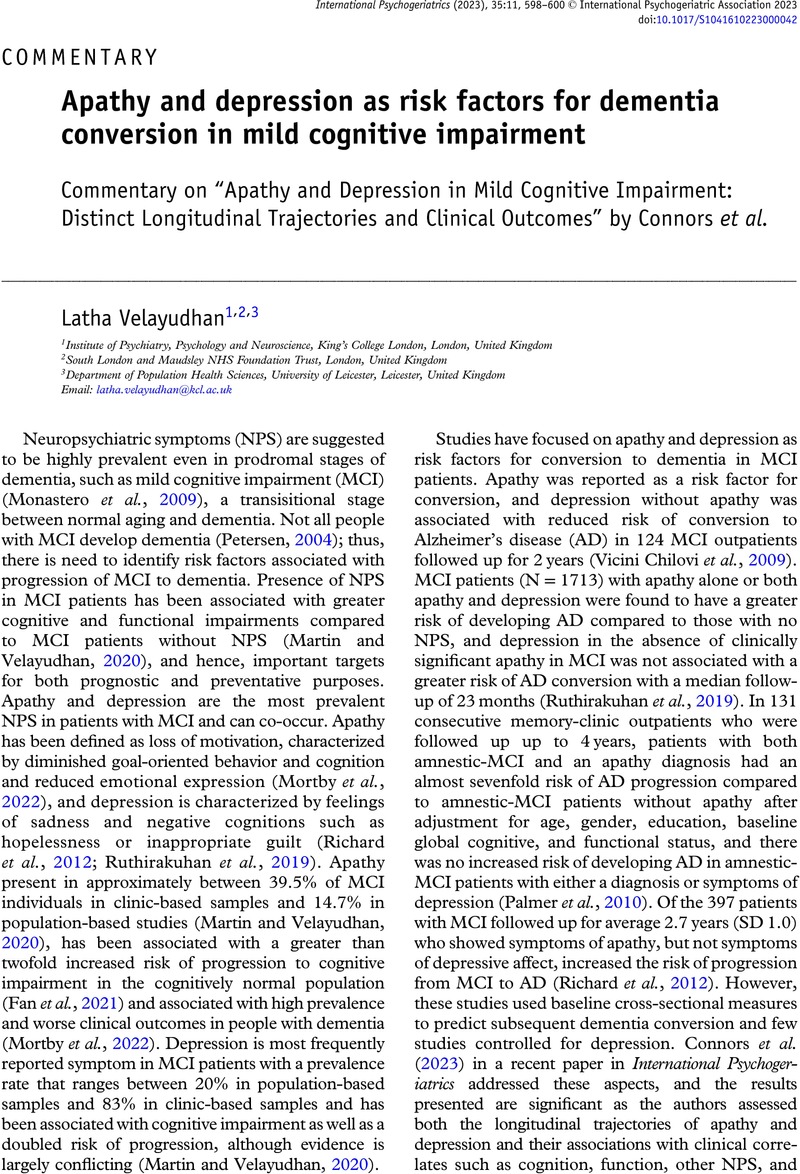Crossref Citations
This article has been cited by the following publications. This list is generated based on data provided by Crossref.
Zhou, Yu
Wei, Lan
Gao, Song
Wang, Jun
and
Hu, Zhigang
2023.
Characterization of diffusion magnetic resonance imaging revealing relationships between white matter disconnection and behavioral disturbances in mild cognitive impairment: a systematic review.
Frontiers in Neuroscience,
Vol. 17,
Issue. ,
Velayudhan, Latha
Dugonjic, Marta
Pisani, Sara
Harborow, Lucy
Aarsland, Dag
Bassett, Paul
and
Bhattacharyya, Sagnik
2024.
Cannabidiol for behavior symptoms in Alzheimer’s disease (CANBiS-AD): a randomized, double-blind, placebo-controlled trial.
International Psychogeriatrics,
Vol. 36,
Issue. 12,
p.
1270.
Cole, Shu
Hua, Chenggang
Peng, Siyun
and
Wang, Weixuan
2024.
Exploring the Relationship of Leisure Travel with Loneliness, Depression, and Cognitive Function in Older Adults.
International Journal of Environmental Research and Public Health,
Vol. 21,
Issue. 4,
p.
498.



